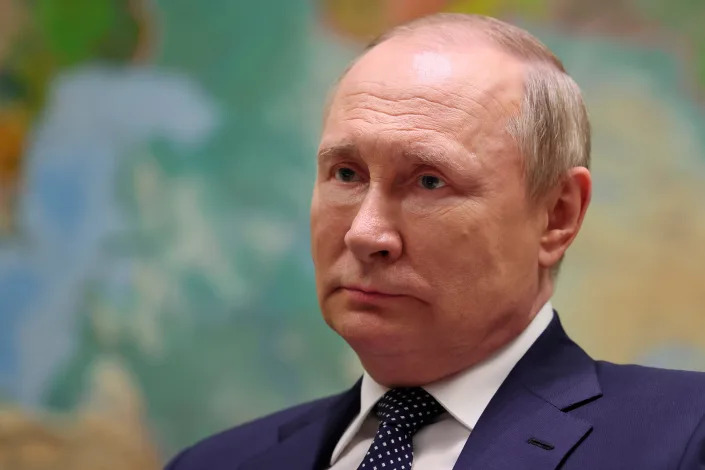Mon, June 13, 2022
Zimbabwe holds Africa's largest lithium reserves, the fifth-largest globally, with its province of Masvingo home to the Bikita mine - site of the world's largest-known deposit of the metal at around 11 million tonnes.
The resource, however, has remained largely untapped for decades due to a lack of investment.
But the growing global demand for electric vehicles has seen Bikita and other Zimbabwean mines attract more Chinese companies in recent years, turning the southern African nation into China's next frontier for the key EV battery component.
Do you have questions about the biggest topics and trends from around the world? Get the answers with SCMP Knowledge, our new platform of curated content with explainers, FAQs, analyses and infographics brought to you by our award-winning team.
In February, state-run China Nonferrous Metal Mining Group announced it would acquire a lithium project in Zimbabwe, the latest Chinese giant to make multimillion dollar acquisitions to secure Lithium supplies in the worldwide race to go green.
Sinomine Resource Group (Sinomine), a China Nonferrous subsidiary, paid US$180 million to acquire full control of two privately held companies that jointly owned 74 per cent of Bikita Minerals, the country's oldest lithium producer.
The Bikita mine initially opened in 1911 for tin excavation, with lithium mining only starting in 1953. A 2021 British Geological Survey report said it was the only mine in Africa producing lithium, though this was yet to be used in battery supply chains.
At a meeting with Zimbabwean President Emmerson Mnangagwa in April, Bikita Minerals general manager and Sinomine director Wang Zhenhua promised to help the government achieve a US$12 billion output in the mining sector by 2023.

Bikita Minerals general manger Wang Zhenhua meets Zimbabwean
Sinomine's is only the latest in a spate of Chinese lithium acquisitions in Zimbabwe, a country that has faced more than two decades of Western economic and political sanctions first imposed during the regime of late former president Robert Mugabe, who was ousted in 2017.
The deal comes close on the heels of Shanghai-listed Zhejiang Huayou Cobalt's acquisition last December of the Arcadia hard-rock lithium mine just outside Zimbabwean capital Harare, for US$422 million. This was followed by a US$300 million project to develop the mine, expected to deliver the first batch of lithium in 2023.
Also last year, Chengxin Lithium Group spent US$77 million on a deal including mining rights in the largely unexplored Sabi Star lithium-tantalum mine project in eastern Zimbabwe, described by the Shenzhen-listed firm as "an attractive investment destination for Chinese new energy companies" looking to increase lithium reserves.
The silvery-white metal is in high demand as an essential raw material for the lithium-ion batteries that power electric vehicles, as more countries move to cut their carbon footprint.
Chris Berry, president of commodities advisory firm House Mountain Partners in New York, said the slew of Chinese investments was aimed both at the structural shortage seen in the lithium market as well as extending Beijing's reach into Africa via the Belt and Road Initiative.
"Zimbabwe isn't the only destination for Chinese lithium," Berry said, citing battery materials producer Ganfeng Lithium's investment in Mali, and recent rumours that Chinese multinational BYD was in talks to buy six lithium mines around Africa which could provide up to 1 million tonnes of the metal per year.
"Chinese companies aren't 'afraid' of investing in Africa in the same way Western investors are. This is China's game to lose," he said.

The Bikita Minerals lithium mine in Masvingo province, Zimbabwe, is believed to be the world's largest-known deposit of the metal.
"I'm not sure Zimbabwe will ever be a major lithium producer in the way that Chile or Western Australia are," Berry said. "This is due mainly to the historic instability in the country as well as the fact that lithium assets in other countries are superior in quality."
Stephen Chan, professor of politics and international relations at the School of Oriental and African Studies in London, said Zimbabwe remained out of favour as a location for Western firms because of economic instability and political uncertainty.
"The Chinese are able to achieve favoured investor status by virtue of an immense inflow of aid, loans and foreign direct investment in the country - a classic case of the Chinese preferring to look at long-term prospects despite short-term costs," Chan said.
He said the world needed lithium and supply from places like the Democratic Republic of Congo (DRC) was shrouded in controversial issues like child labour.
"Total global reserves of lithium are estimated at only 14 million tonnes," Chan said, warning that, as demand grew with the world turning away from pure reliance on fossil fuels, "available reserves will be exhausted within a decade".
He said China was the world's fourth largest producer of the metal, but its reserves were only at 1 million tonnes. So Zimbabwean lithium, provided there was a lot of tonnage in the mines, would in fact power Chinese industry first and foremost.
The DRC has also emerged as a key source of EV battery raw materials. Chinese mining giant Zijin is embroiled in a legal battle with Australia's AVZ minerals over control of the DRC's Manono mine, estimated to hold the world's biggest lithium deposit.
The 2021 British Geological Survey said significant natural lithium resources and mining potential might provide an opportunity for many African countries to help meet increased demand, most notably Zimbabwe, Namibia, Ghana, the DRC and Mali.
However, there was much less engagement in critical stages further along the supply chain, the study said. "Currently, Africa has very little capacity for lithium mineral processing, further refining of lithium chemicals, or manufacture of battery components," it said.
"This leads to a typical situation where the mineral concentrate is exported; value is added outside Africa, and products using lithium-ion batteries are then imported."
Copyright (c) 2022. South China Morning Post Publishers Ltd. All rights reserved.
















